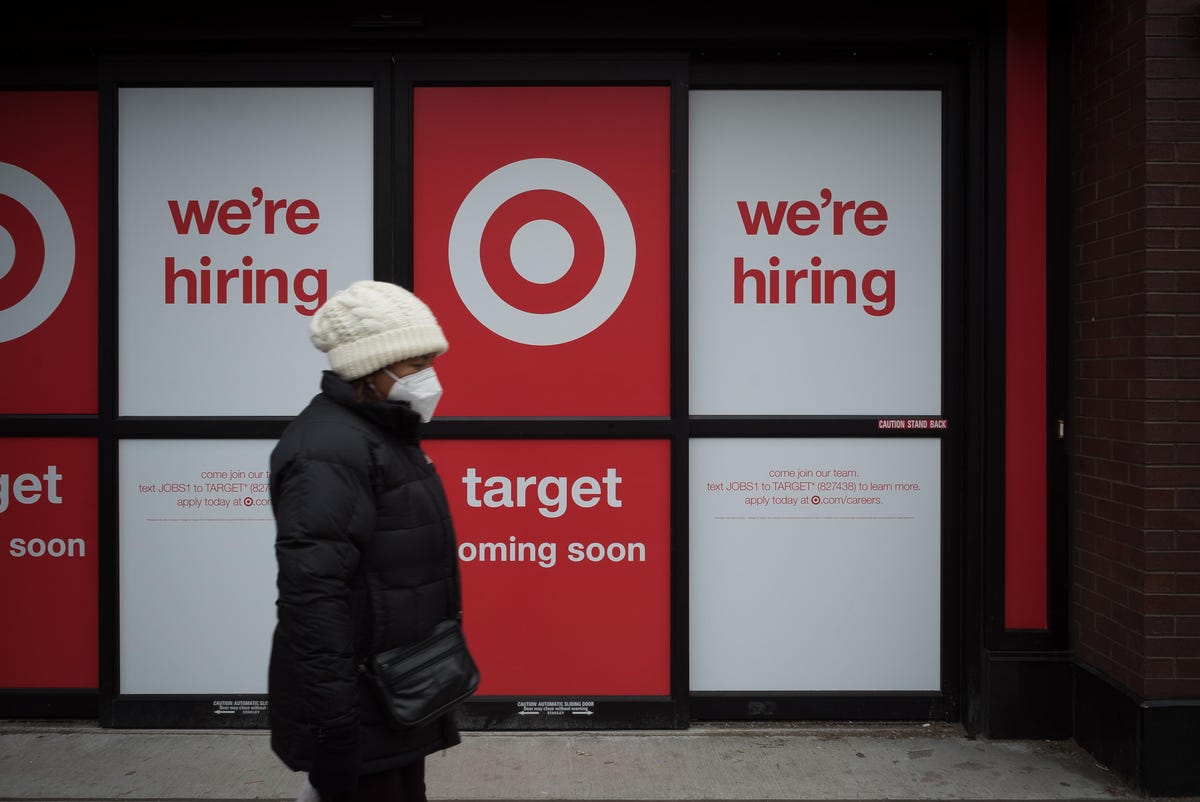
Retailers are facing many unknowns as they enter 2022. The virus continues to scare many people, and shopping habits haves veered to the internet because it is a more guaranteed safe way of shopping. In response to these new consumer attitudes, retailers must make some drastic changes – in their supply chains and in the way they will sell their wares in stores.
Here are some observations.
Queens, New York. March 16, 2021. For Hire sign on a soon to open Target store in Jackson Heights.
The supply chain. We have heard enough about clogged harbors and delayed overland deliveries. The port of Los Angeles has imposed fines for containers that stay on the docks for more than nine days – and it is working. Now the same port is demanding that empty containers move within nine days, and it is proposing a fine by the end of the month to ensure compliance. Retail managements should insist that their containers move before these deadlines; there is no reason to incur such costs.
In addition, technology for most retailers lags when it comes to supply-chain management, and yet few new initiatives to update technology haves been noted. As a result, this may mean that retailers will soon realize they have to rethink their plans and divert capital from expansion or other capital expenditures to add speed and daily updates to a system that today services not only stores but also internet customers. After all, the timely flow of goods is critical and speed is very important.
Miniaturization of stores. Macy’s
However, there is more to a successful store strategy than just resizing the units. Sales associates have to be productive, and that means they need to be managed differently. I have seen too many standing behind a counter to which they had been assigned without any customers to serve. In smaller stores, where open counters are popular, the format often allows sales associates to roam a larger area and greet potential customers. The empowerment to proactively manage customer service sets up a different attitude and often develops a greater team spirit at the same time. The smaller Target
MORE FOR YOU
POST SCRIPT: Initiatives in new store formats are welcome and needed these days. The smaller store design often brings new ideas to the fore. Smaller snack bars in Target stores are just one example. The first “Bloomie’s” has opened in Fairfax, Virginia,, and we will see more. Supply chain innovations that help stores become faster processing in receipts and delivery are urgently needed. Let’s see who will be first with some new ideas. Speed in innovation that profitably delivers a better customer shopping experience will be a winning strategy.




